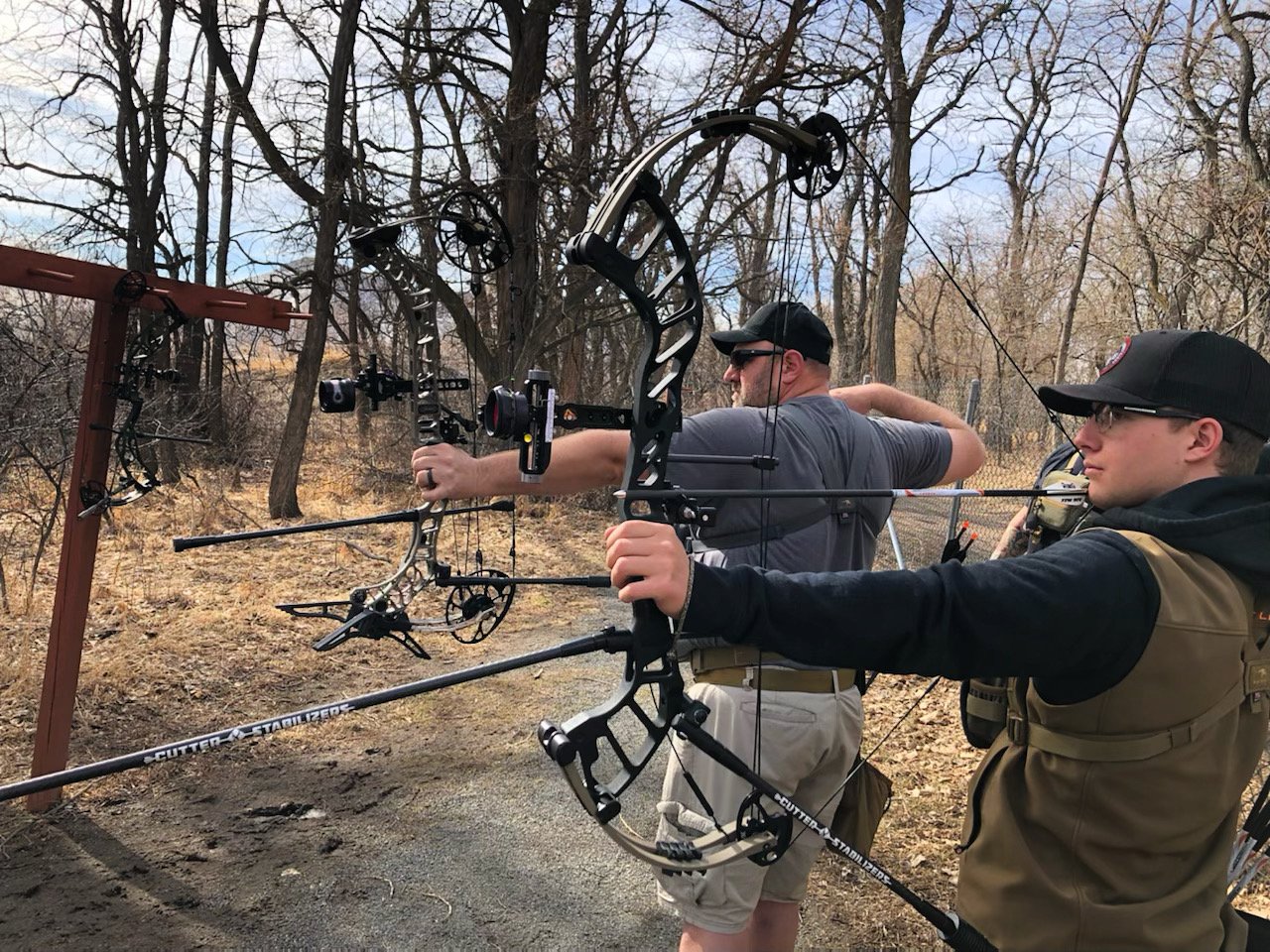Optimize Your Archery Precision With These Bow Stabilizer Methods
One critical element that can considerably influence your efficiency is the appropriate application of bow stabilizers. Whether you are an experienced archer looking to fine-tune your abilities or a newbie anxious to boost your accuracy, mastering these bow stabilizer techniques might be the trick to striking your mark with unrivaled uniformity.
Benefits of Making Use Of Bow Stabilizers
Using bow stabilizers can significantly improve an archer's accuracy and general performance by reducing bow torque and vibration. In addition, bow stabilizers dampen resonance, which not only improves the convenience of shooting yet also avoids the bow from leaping upon launch, thus helping in maintaining proper aim.
In addition, bow stabilizers can assist in holding the bow steady, specifically during gusty conditions or when shooting from longer ranges. The added weight at the front of the bow provides stability and balance, enabling the archer to concentrate on aiming without the interruption of bow activity. Generally, the advantages of making use of bow stabilizers extend beyond simply precision, enhancing the archer's experience and performance in various shooting circumstances.
Choosing the Right Bow Stabilizer
Choosing the suitable bow stabilizer is important for maximizing your archery devices and improving shooting efficiency. Larger stabilizers can assist decrease bow torque and absorb even more vibration, leading to a steadier aim.

Lastly, consider the style of the stabilizer. Some stabilizers feature flexible weights or dampeners that allow you to customize the equilibrium and feeling of your bow. Eventually, choosing the best bow stabilizer entails finding an equilibrium between weight, product, size, and design to improve your capturing accuracy and total efficiency.
Appropriate Installment Techniques
To make certain optimal performance and security in archery, understanding proper installment methods for your bow stabilizer is vital. The initial step in installing a bow stabilizer is to identify the right placement on your bow. Most stabilizers are connected to the front of the riser, listed below the hold, to help counterbalance the weight of accessories such as sights and quivers. Make sure that the stabilizer is not interfering with other parts or hindering your shooting form.
Following, securely connect the stabilizer to the bow using the proper mounting hardware. Some stabilizers come with flexible weights that can be included or gotten rid of to fine-tune the balance of your bow.
Adjusting Stabilizer Weight and Size
After making certain the appropriate installment of your bow stabilizer, the next step includes readjusting the weight and size to enhance its performance in boosting archery precision. The weight of the stabilizer plays an important duty in decreasing bow motion during the shot cycle. Including weight to the stabilizer can help wet resonances and boost stability, leading to more exact and consistent shots. On the other hand, minimizing the weight can boost maneuverability, which is beneficial for scenarios needing quick target procurement.
A longer stabilizer can provide better stability by enhancing the range between the bow and the weight at the end of the stabilizer. On the other hand, a shorter stabilizer supplies a lot more maneuverability and may be favored by archers who value dexterity and fast activities during shooting.
Advanced Stabilizer Tuning Tips
Achieving ideal bow security and accuracy in archery demands a nuanced approach to advanced stabilizer adjusting. Advanced stabilizer adjusting involves fine-tuning different elements to boost the bow's balance, decrease vibration, and enhance overall accuracy. One crucial strategy is to try out various stabilizer arrangements, consisting discover this info here of side-bar and back-bar arrangements, to find the excellent balance between stability and ability to move for your capturing design. bow stabilizer. Additionally, changing the angle and positioning of the stabilizer can have a significant effect on how the bow responds upon launch.
One more important aspect of advanced stabilizer tuning is optimizing the damping buildings of the stabilizer system. This can be attained by integrating additional moistening accessories such as rubber dampeners or harmonic stabilizers to additionally reduce resonance and sound. Discovering different materials for the stabilizer building, such as carbon fiber or light weight aluminum, can likewise influence the bow's performance by altering its weight circulation and rigidity. By meticulously tweak these sophisticated stabilizer elements, archers can maximize their accuracy and uniformity on the range or in competitors.
Final Thought
To conclude, making best use of archery accuracy can be accomplished through the appropriate selection, setup, and adjustment of bow stabilizers. By recognizing the advantages of using stabilizers, picking the ideal one, and adjust its weight and length, archers can boost their capturing accuracy. Employing sophisticated adjusting strategies can better boost stability and uniformity in arrowhead trip. Overall, incorporating bow stabilizers into archery practice can lead to enhanced performance and boosted precision.
Utilizing bow stabilizers can substantially improve an archer's accuracy and total performance by reducing bow torque and resonance. Longer stabilizers provide higher security and equilibrium, especially for long-distance capturing, while much shorter stabilizers offer more versatility and are easier her explanation to maneuver in tight rooms (bow stabilizer). Carbon fiber stabilizers are light-weight and why not find out more durable, while aluminum stabilizers are robust and offer exceptional vibration dampening
A longer stabilizer can provide better stability by enhancing the range in between the bow and the weight at the end of the stabilizer.Another crucial element of innovative stabilizer tuning is optimizing the damping properties of the stabilizer system.